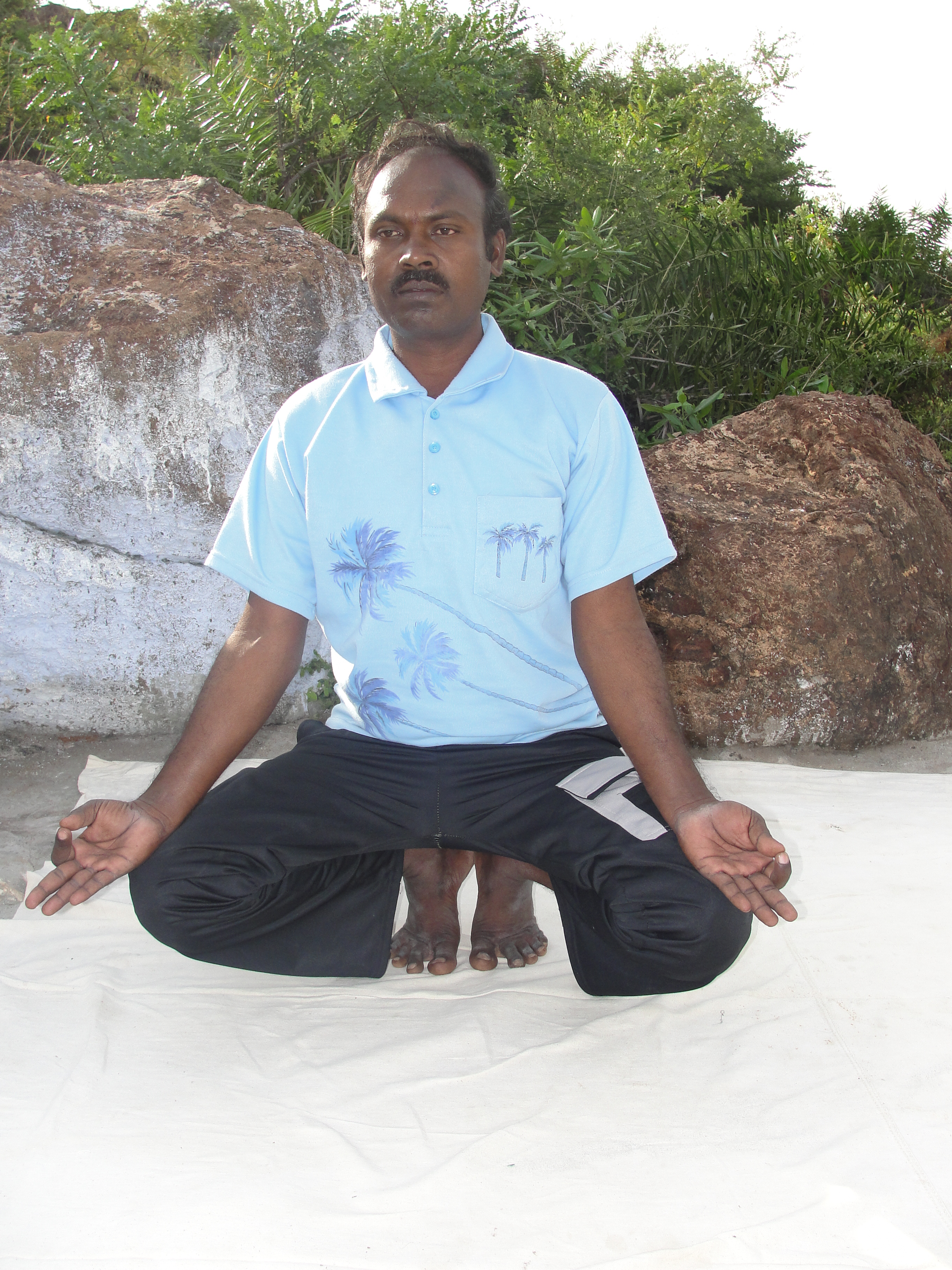Gorakshasana on:
[Wikipedia]
[Google]
[Amazon]

 Gorakshasana (Sanskrit: गोरक्षासन, IAST: Gorakṣāsana, Cowherd pose) is a seated
Gorakshasana (Sanskrit: गोरक्षासन, IAST: Gorakṣāsana, Cowherd pose) is a seated
 Gorakshasana (Sanskrit: गोरक्षासन, IAST: Gorakṣāsana, Cowherd pose) is a seated
Gorakshasana (Sanskrit: गोरक्षासन, IAST: Gorakṣāsana, Cowherd pose) is a seated asana
An asana is a body posture, originally and still a general term for a sitting meditation pose,Verse 46, chapter II, "Patanjali Yoga sutras" by Swami Prabhavananda, published by the Sri Ramakrishna Math p. 111 and later extended in hatha yoga ...
in hatha yoga. It has been used for meditation
Meditation is a practice in which an individual uses a technique – such as mindfulness, or focusing the mind on a particular object, thought, or activity – to train attention and awareness, and achieve a mentally clear and emotionally cal ...
and in tantric practice.
Etymology and origins
The pose is named for the sageGorakhnath
Gorakhnath (also known as Goraksanath, c. early 11th century) was a Hindu yogi, saint who was the influential founder of the Nath Hindu monastic movement in India He is considered one of the two notable disciples of Matsyendranath. His follower ...
, founder of the nath
Nath, also called Natha, are a Shaiva sub-tradition within Hinduism in India and Nepal. A medieval movement, it combined ideas from Buddhism, Shaivism and Yoga traditions in India.meditation
Meditation is a practice in which an individual uses a technique – such as mindfulness, or focusing the mind on a particular object, thought, or activity – to train attention and awareness, and achieve a mentally clear and emotionally cal ...
. It is accordingly practised by his tantric devotees, the kanphata yogis. It is said to awaken kundalini
In Hinduism, Kundalini ( sa, कुण्डलिनी, translit=kuṇḍalinī, translit-std=IAST, lit=coiled snake, ) is a form of divine feminine energy (or ''Shakti'') believed to be located at the base of the spine, in the ''muladhara'' ...
and to halt the process of aging. The Sanskrit word ''āsana'' (आसन) means "posture" or "seat".
Gorakshasana is medieval in origin, described in hatha yoga texts including the 14th century ''Shiva Samhita
''Shiva Samhita'' (IAST: śivasaṃhitā, also ''Siva Samhita'', meaning "Shiva's Compendium") is a Sanskrit text on yoga, written by an unknown author. The text is addressed by the Hindu god Shiva to his consort Parvati. The text consists of fiv ...
'' 3.108-112, the 15th century ''Hatha Yoga Pradipika
The ''Haṭha Yoga Pradīpikā'' ( or Light on Hatha Yoga) is a classic fifteenth-century Sanskrit manual on haṭha yoga, written by Svātmārāma, who connects the teaching's lineage to Matsyendranath of the Nathas. It is among the most inf ...
'' 1.28-29, and the 17th century '' Gheranda Samhita'' 2.24.
Description
Gorakshāsana is a seated pose with the soles of the feet pressed together and the knees on the ground, as in Baddha Konasana (in medieval times known as Bhadrasana), with the difference that the heels are under the body.Variations
The pose is sometimes described as having the toes on the ground with the heels directly above them, as inMulabandhasana
Mulabandhasana (Sanskrit: मूलबंधासन) is a sitting asana in hatha yoga.
Etymology
The name is from the Sanskrit मुल mūla, "root, base"; भाण्ड bāndha, "lock"; and आसन āsana, meaning "posture, seat".
De ...
. The ''Hatha Yoga Pradipika'' directs the yogin to "place the ankles under the scrotum on either side of the perineal seam, with the left ankle on the left and the right ankle on the right. Take hold of the sides of the feet firmly and steadily with both hands." It claims that the pose destroys all diseases.
Other poses with the same name
The name Gorakshasana is given to a different balancing pose in B. K. S. Iyengar's 1966 ''Light on Yoga
''Light on Yoga: Yoga Dipika'' (Sanskrit: योग दीपिका, "Yoga Dīpikā") is a 1966 book on the Iyengar Yoga style of modern yoga as exercise by B. K. S. Iyengar, first published in English. It describes more than 200 yoga postur ...
'', where the legs are folded as in Padmasana with the knees only on the ground, the hips directly above the knees, and the hands in prayer position. Iyengar describes it as "a difficult balancing pose and one is elated even if one can only balance for a few seconds."
References
External links
* {{Hatha yoga Sitting asanas Medieval Hatha Yoga asanas Meditation asanas